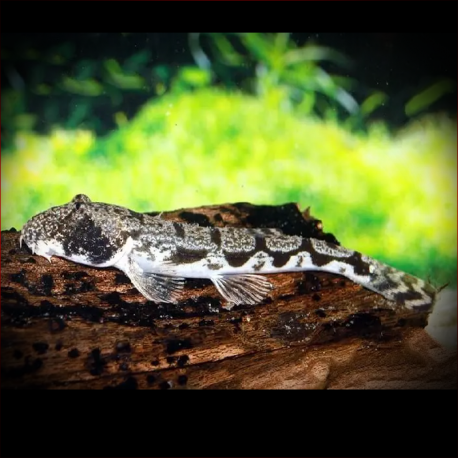Canthophrys Gongota
Cypriniformes Print
More info
Datasheet
| Minimum Tank Size | 80 litres / 21.13 US gallons |
| Maximum Size | 11.0cm / 4.33inches |
| Temperature | 18°C / 64.40°F - 22°C / 71.60°F |
| Hardness | 1.01dgH / 18ppm - 10.03dgH / 179ppm |
| pH | 6.0-7.0 |
General Description
The Moose-Faced Loach, scientifically known as Canthophrys Gongota, is a gregarious species primarily found in slow-moving tributaries and minor rivers with mud, sand, or gravel substrates. It belongs to the family Cobitidae and can reach a maximum size of 11.0cm. This species, native to the Ganges and Brahmaputra river systems in Nepal, northern India, and Bangladesh, is also referred to as Somileptes gongota in some aquarium literature. It is a micropredator, feeding on insect larvae and small crustaceans, and is a delicate fish that is challenging to transport.
Aquarium Setup
A suitable tank for the Moose-Faced Loach should include a soft, sandy substrate to mimic its natural habitat, as these fish spend time buried or partially buried. It is recommended to avoid coarse gravel, as it can stress the fish. While additional decor like water-worn rocks or driftwood is optional, they can provide hiding spots. Lighting should be dim unless growing plants, and the addition of leaf litter can enhance the natural environment. Regular water changes of 30-50% tank volume are necessary for stable, mature water conditions.
Behaviour
This species is best kept in a group of six or more and exhibits interesting behavioral interactions in groups. They are not recommended for a general community aquarium but can coexist with upper-water column fishes like small cyprinids, which can reduce their timidity. Sand-dwelling loaches from families Cobitidae and Nemacheilidae can also be suitable tankmates, although research is essential to prevent potential aggression or territorial issues.
Feeding and Diet
The Moose-Faced Loach is a micropredator that sifts mouthfuls of substrate to extract food like insect larvae and small crustaceans. In aquariums, they accept sinking dried foods but should be regularly offered small live or frozen fares such as Daphnia, Artemia, and bloodworms to maintain their health and vitality.
Reproduction & Dimorphism
Reproduction of the Moose-Faced Loach is unrecorded in captivity. Unlike most Cobitids, male individuals lack a lamina circularis on their pectoral fins, making it challenging to sex young specimens accurately. Older females grow larger than males and develop a deeper body shape.
Habitat and Distribution
Native to the Ganges and Brahmaputra river systems in Nepal, northern India, and Bangladesh, the Moose-Faced Loach is primarily found in slow-moving tributaries with mud, sand, or gravel substrates. Although aquatic plants are sparse, riparian vegetation can be dense in certain locations, providing a varied habitat alongside species like Schistura savona and Macrognathus aral.

